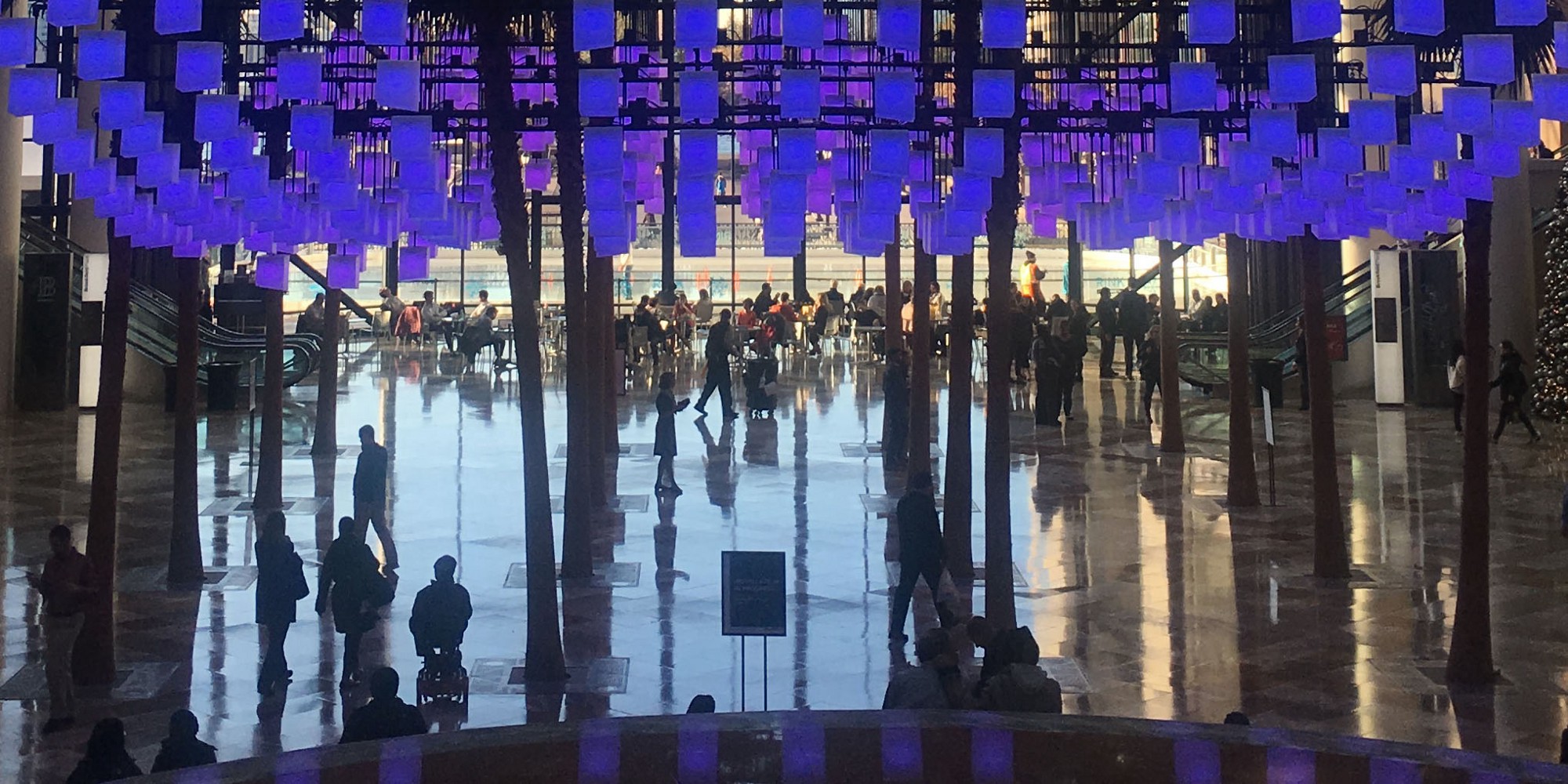At HBC Tech, one of the company’s current initiatives is to bridge the divide between the physical and digital experience. Saks Fifth Avenue has a considerable network of retail locations throughout the US, and our goal is to use technology to entice more people into these stores. More specifically, one initiative focuses on connecting new and existing Saks customers with our style professionals on the retail floor.
How does the design team go about tackling this challenge? The first thing we do is map out the full customer journey from beginning to end — device-agnostic, channel-agnostic. We create a view of the distinct elements that make up the customer journey, in order to devise an approach to provide a better experience for each touchpoint. Research helps to inform the customer journey, and for this initiative we’ve conducted many customer and associate interviews in order to get to the heart of their challenges and how we can help.
We have two types of customers to design for in this case — the associate who works in the retail store and provides styling advice to the customer, and the Saks customer themselves. There are a few points in the journey where these two users intersect. Customers may have an event coming up that they need to dress for, or they might be looking for that impossible-to-find Fendi backpack. They might deep down really want a new fashionable friend that they can get advice from on the daily. In these moments, they will be more likely to reach out to a retail associate for help.
Associates are style professionals who thoughtfully build their client book month after month and meticulously style and assist their regular clients. They want to provide the best possible service to Saks customers and drive sales. There are some common pain points that came up again and again in the interviews, and design can help to solve some of them. These are four core opportunities to make the retail associate workflow more seamless, structured and analytical.
1. One view of the customer
Visibility into the customer’s previous orders, style affinities, brands they follow, sizes and online activity will give associates the information they need to provide the best advice to customers. Most importantly, associates need to be able to access this information on their personal devices as customer requests don’t stop after business hours.
2. Client acquisition
Associates need to have the ability to accept digital leads in one system — the same system that they add new clients to that they meet in the store. We want to provide as much information about the customer up front to allow them to successfully work with the customer. We’re launching a new way for customers to onboard with a stylist in the Saks app soon, however to scale the styling service, we’re also talking about automation. Some companies are turning to chatbots to help customers narrow down their requests before connecting with a styling professional. This boosts the efficiency of customer service for companies, while also potentially leading to a more accurate match with a stylist.
3. Inventory
Visibility into online and in-store inventory is a must. It should be clear to Associates what they can pull from the store racks vs what they need to send a link to online. This visibility should extend to other store locations and beyond. What if there were even further transparency of global inventory levels of a product? This would benefit customers as they could find anything they’re looking for through Saks stores, and it would benefit associates by boosting sales.
4. Automation
Store associates don’t have time to sift through inventory to provide personalized recommendations to each of their clients, or to personally get to know each new customer coming through the doors. They need insights regularly delivered to them that they can take immediate action on. For example, suggestions for follow up, new arrivals, upcoming events, or personal notes that can be searched and added to tasks. Machine learning can be implemented with product recommendations at the customer level as well as at the group level of customers with similar affinities. Perhaps most importantly, ideally all of these activities would exist in a unified stylist tool. We should provide a seamless integration of their CRM tool and point of sale so that associates can checkout a customer and add notes to follow up efficiently without switching between systems. After more than 30 interviews with our Saks Fifth Avenue retail associates, these opportunities to improve their experience became quite clear. Some of these challenges are beyond design, but through workshops, research, prototyping and iteration, we can assist in identifying the priorities for business, product and all other teams involved. Associates are our customers too. They are the thread that ties together all of the services offered by Saks, and they represent the brand. We should be doing everything in our power to make their lives easier and to nurture their client relationships.
